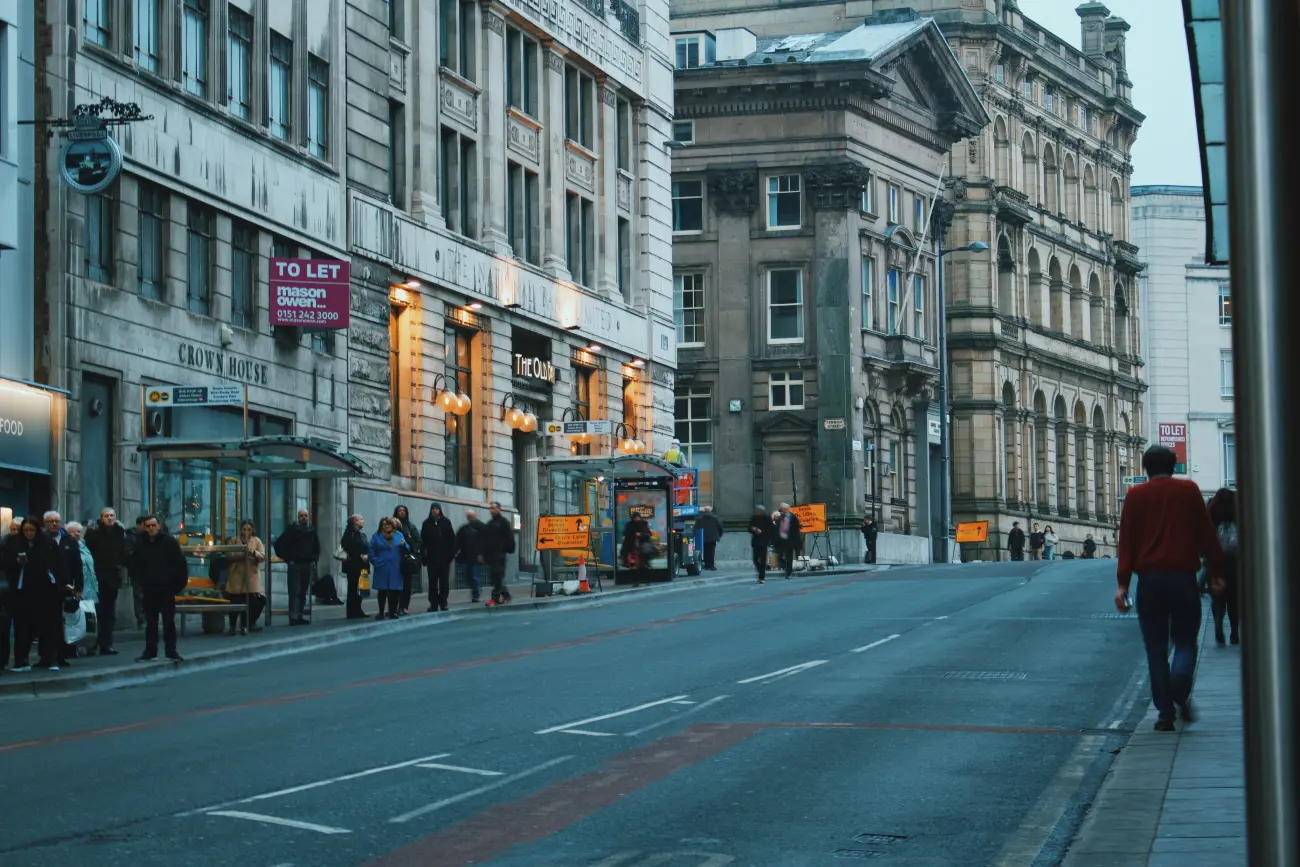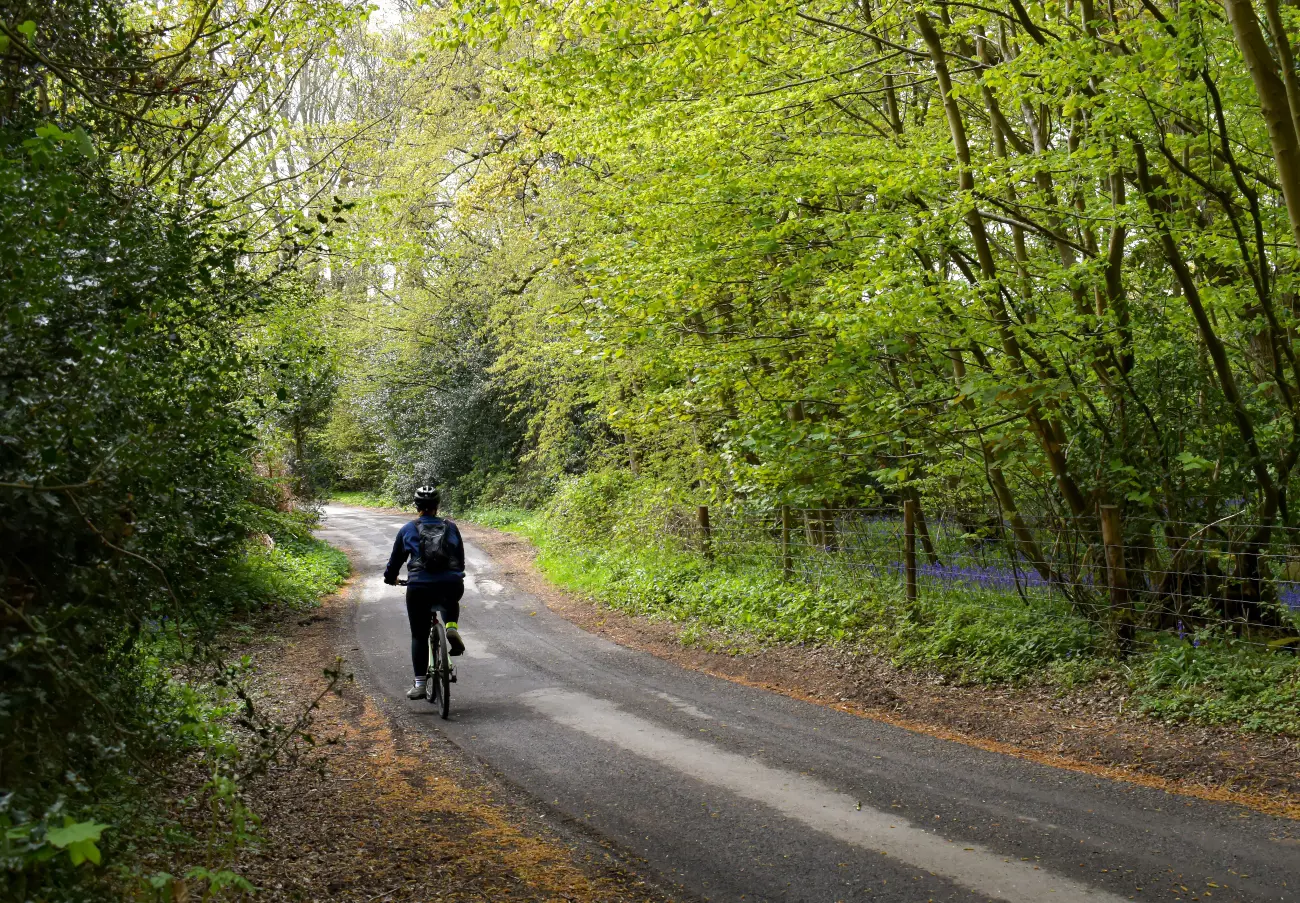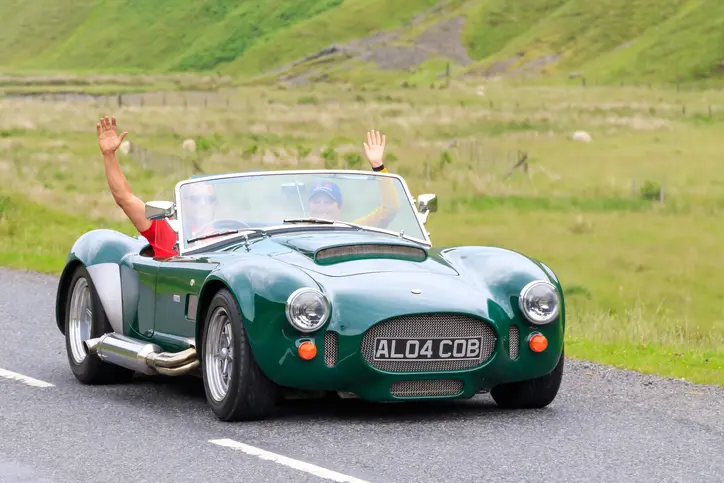Highway Code changes – what classic owners need to know
24 February 2022
There have been some recent additions to the Highway Code, designed to enhance the safety of pedestrians, cyclists and horse riders. A few of the new rules are aimed directly at drivers, so we thought it would be useful to run through the new directives – and to highlight how these changes will affect you as you drive around in your classic car.
It's essential to familiarise yourself with the Highway Code – it's one of the basic building blocks of being a responsible driver. As a classic car owner, of course, another of those key building blocks is some specialist classic motor insurance.
Not only is the correct insurance a legal requirement for all drivers, having the right classic car insurance may also provide financial assistance if you do ever find yourself in difficulty – either needing to pay for repairs to your own vehicle, or having to compensate a third party if you have been at fault in an accident. We’ll run through what to do in the event of an accident a little further down this article.
First, though, read on as we run through the new changes to the Highway Code and how they will impact you and your classic.

Change 1. Hierarchy of road users
The first thing you may notice is that the Code's introduction has been updated, and now includes three new rules that discuss the ‘hierarchy of road users’.
What does this mean? Well, it identifies those road users who are most at risk in the event of a collision. Essentially, this means pedestrians, cyclists, and horse riders – all those not protected from impact by sitting inside a large metal vehicle.
The Code states that these more vulnerable road users should be at the top of the hierarchy – which is to say that other road users – vehicle drivers, essentially – should give way to them.
Within this hierarchy, of course, pedestrians are most vulnerable of all. In the event of, say, a pedestrian meeting a cyclist, it's the latter who should give way.
The Code does still remind us, however, that everyone – whether pedestrian or motorist – must behave responsibly when on the public highway. All road users should be aware of the Highway Code; they should behave considerately to other road users; and they should understand that they have a responsibility for the safety of others.
Change 2. Pedestrians crossing the road at junctions
Updates to the Highway Code now make it clear that, when pedestrians are either crossing or waiting to cross at a road junction, other road users should give way and let them cross. This includes cyclists and, of course, motorists.
The new rule clarifies that:
- If pedestrians are either crossing or waiting to cross at a junction, any traffic wishing to turn into the road they are crossing should give way.
- Anyone cycling, driving or riding a motorcycle must give way to pedestrians on a zebra crossing. Similarly, cyclists and drivers must give way to both pedestrians and cyclists on a parallel crossing. This is like a zebra crossing, but has a section for cyclists to cross the road next to the pedestrian / zebra crossing section. Both the pedestrians on the zebra crossing and the cyclists on the parallel crossing have priority over motorists and cyclists on the road that they are crossing
Change 3. Cyclists and horse-drawn vehicles at crossings
As a motorist, you should not cut across more vulnerable road users – such as horse riders, cyclists, or horse-drawn vehicles – who are proceeding straight ahead, while you are turning into or out of a junction, changing lanes or changing direction.
You wouldn't turn across the path of another motor vehicle: this rule makes it clear that you should not turn across the path of pedestrians, cyclists or horse riders either. This holds true whether the latter are using a cycle lane, a cycle track, or riding ahead on the road.
- You should not turn at a junction if your turn would cause the cyclist, horse rider or horse-drawn vehicle going straight ahead to stop or swerve. Instead, you should stop and wait till the cyclist or horse rider has crossed, or until there is a safe gap between pedestrians, cyclists or riders wishing to cross the road.

Change 4. Overtaking
The updated Code states that motorists may – if necessary, and provided the road ahead is clear – cross a double white line to overtake someone cycling or riding a horse. However, this only applies if the latter is travelling at a speed of 10mph or less.
The Code also features some updated guidance on the safe passing distances and speeds for motorists who are overtaking vulnerable road users – such as pedestrians, cyclists and horse riders. These are as follows:
- You should leave at least 1.5 metres, or 5 feet when overtaking people cycling. However, this distance only applies if you yourself are travelling at speeds of up to 30mph: if you are travelling at higher speeds, you should give them more space.
- If you are passing someone riding a horse, or driving a horse-drawn vehicle, you should overtake at a speed of less than 10mph, and give them a clearance of at least 2 metres (6.5 feet).
- If you have to pass a pedestrian walking along the road (where there is no pavement, for example), you should similarly allow at least 2 metres of space and keep to a suitably low speed.
If, in any of these scenarios, you cannot give the cyclist, horse rider or pedestrian the clearance stated above – for example, because oncoming traffic means that you can't swing out wider – then you should wait behind them, and not overtake until road conditions allow you to do so safely.
Change 5: Parking and leaving your vehicle
The Highway Code also has some new advice around getting out of your car. Specifically, it recommends a new technique that is sometimes known as the ‘Dutch Reach’.
Essentially, this technique means exiting your vehicle by using your hand on the opposite side to the door you are opening. So, typically, as a driver, you will leave the car through the driver's door, which is on the right hand side of the car. Instead, the 'Dutch Reach' involves using your left hand, rather than the more obvious right hand, to open the door.
Why do they recommend doing it like this? Well, the action of reaching over to open that door with the opposite hand means that you naturally turn your head to look over your shoulder and behind the car. This will give you a better view of anyone coming up behind you, and make you less likely to injure any passers-by.
As a classic car owner, you may have already adopted this technique to reduce the risk of collisions. If not, give it a try today.
Change 6: Charging etiquette
There is also new guidance around how drivers should charge their electric vehicles (EVs).
When using an electric vehicle charging point, drivers should:
- Park as near as possible to the charge point, and make sure that any trailing cables do not create a trip hazard for passers-by.
- If possible, display a warning sign.
- When the charging is completed, return all charging cables and connectors to their storage containers, to avoid creating an obstacle for other road users and to minimise the chance of an accident.
But hang on – surely this doesn't concern the classic car crowd, who are all driving cars made years or even decades before electric vehicles became a reality? Not necessarily. It’s now perfectly possible to convert your classic into an EV, giving you the best of both worlds: classic style, and modern efficiency.
If you’re working on an electric restoration, make sure you’ve got specialist classic car insurance in place.
Reasons to go electric
Yes, the growth in electric vehicles (EVs) hasn’t been restricted to the very latest crop of cars to reach the market. No, it's perfectly possible to have your classic car converted into an EV.
And, on one level, why wouldn't you? You’ll save money on your fuel bills; you should see reductions in your road tax and any congestion charges you are currently liable for; and you can also expect to make a saving on maintenance and servicing costs, as electric drive systems use fewer parts and there is, generally, less to go wrong. And most importantly, there are environmental benefits, too.
However it will obviously cost you a few thousand pounds to convert your classic to electric. We talk more about the pros and cons elsewhere on our site.
Just remember to inform your classic car insurance provider, if and when you do go ahead and make the change to electric.
What should you do if you're involved in an accident in your classic car?
None of us wants to be involved in a car accident. But, whether it's another driver or yourself at fault, the reality is that an accident can happen quickly – and unexpectedly.
So, here is a checklist of what to do – to make sure you do the right thing legally, and also to avoid invalidating any claims you may need to make on your classic car insurance policy.
Straight after the accident, you should:
- Stop the car as soon as possible. This is a legal requirement. You must switch off your engine and turn your hazard lights on.
- Next, you should check for any injuries – either to yourself or your passengers.
- If the accident has been minor, and no one has been injured, you should still note down the details – time, place, details of the other car and driver, any damage to your car and theirs. You should also record the fact that there are no injuries. This information will be useful in the event that the other party tries to claim for an injury further down the line.
- If anyone is hurt, and/or if the road is now blocked, call the police and an ambulance immediately.
- Other occasions when you should call the police: if the other driver leaves the scene without giving their details; if you suspect that the driver caused the collision deliberately (what's known as 'crash for cash'); if you believe they have no insurance; or if you have cause to believe that they are under the influence of drink or drugs.
- Remain as calm as possible. Of course, it's perfectly normal to feel shaken up after an accident. However, if you can take a few deep breaths and calmly get a sense of the situation, this is likely to serve you much better in the long run. Don't lose your temper, as this may only provoke the other driver to behave similarly.
- Importantly, don't admit responsibility for what has happened, or even apologise, until you have a complete understanding of what happened.
If you haven't contacted them immediately as above, you should notify the police about the accident within 24 hours. Failure to do so could result in a fine, penalty points on your licence (with a resulting increase in your classic car insurance premium), or even a disqualification from driving.
What to do next: exchange details
- You must share your name and address with everyone else involved in the accident, if the latter has caused either damage or injury. This is a legal requirement.
- You should also swap insurance information and details with the other driver, and make a note of any other passengers.
- If you can, check whether the other driver is the registered owner of the vehicle. If they do not appear to be the owner of the car, find out who is – it may be a company car, for example.
Details to take down at the scene of the accident
Make sure you get all these details at the accident scene:
- Details of all vehicles involved – their make and model, registration plate, and colour. You can take pictures of them if this is easier.
- The date and time that the accident occurred.
- The driving conditions. Include information such as the weather, any street lighting, and the quality of the road. Were there road markings? Was the road surface in a good or poor state of repair? Was it wet or muddy? These circumstantial details about the driving conditions may help you when it comes to making any claims on your classic car insurance policy.
- A precise note of what damage has been done to the vehicles.
- Any injuries sustained – to drivers, their passengers, or any pedestrians at the scene.
- The names and contact details of any witnesses to the accident.
- You should also take some pictures of the scene with your phone. These should show, for example, the positions of the cars involved in the accident, plus any damage they have suffered.
But what if no one else is involved in the accident – for example, if you have damaged someone's property, or their parked car? In this case, you should leave your details at the scene so that the owner of the car or property can contact you.
The temptation might be to drive off, but you really shouldn't. If a witness or a CCTV camera does happen to observe you exiting the scene without leaving your details, you could find yourself in hot water.

How to make a claim
You should contact your classic car insurance provider as soon as possible after the accident – whether or not you intend to make a claim.
Your insurer will ask you for your policy number, and the registration number of the cars involved, plus – if you have them – the details of the other driver. These will include their name, address, phone number and insurance details.
You may decide not to claim, either to keep your no-claims intact (unless you have protected no claims), or because the repairs may be minimal and you may decide to pay for them yourself.
Even if you decide against making a claim, you should still tell your insurer about the accident. Why is this? Well, it's possible that the other driver may try to make a claim without your knowledge.
The Highway Code: a brief history
Lastly, let's take a look back at the Highway Code itself – that bible of UK road safety for over 90 years.
We go into much greater detail on the Code in our article on the history of the Highway Code, but let's just remind ourselves of a few key milestones along the way so we can see how much has changed.
You will also find our quick history of car safety a fascinating read.
1931: The first Highway Code appears, published by the UK Government. It has arisen out of the 1930 Road Traffic Act, the first legal document to make careless driving an offence. Transport Minister Herbert Morrison hopes that it will serve as "a code of good manners to be observed by all courteous and considerate persons".
1934: The Code's second edition appears. This version is considerably longer than its predecessor, and is also the first version to include diagrams of some common road signs – plus a warning about the dangers of driving while tired or under the influence of alcohol.
1954: The fourth edition introduces colour illustrations, while its back cover features some basic first aid instruction. The traffic signs section also looks different, as it has to accommodate the new triangular warning signs that have recently been introduced.
1959: The Highway Code's fifth edition has a very important new section: driving discipline on motorways. The UK's very first section of motorway, the Preston Bypass (now part of the M6) opened the previous December, while the M1, our first complete motorway, opened during 1959 itself. Britons are only just getting used to driving on this all-new type of road, and the Highway Code provides some essential guidance.
1978: In response to the boom in car ownership and, consequently, growing numbers of pedestrian casualties, the 1978 edition introduces the Green Cross Code, a subsection designed to teach pedestrians about road safety. This year also sees the introduction of The Green Cross Man, a superhero who teaches children all about road safety.
2012: The Highway Code app is introduced, allowing motorists to keep track of the latest developments and also to test their road knowledge regularly.
Here when you need us most
Car accidents can be stressful for everyone involved. Here at Lancaster, we have a 24-hour claims helpline, so we’re here when you need us most.
Benefits of cover through us can also include:
- Choice of repairer
- Salvage retention
- Two-year Agreed Valuation
Contact us to arrange a quote for classic car insurance today.
Policy benefits, features and discounts offered may very between insurance schemes or cover selected and are subject to underwriting criteria. Information contained within this article is accurate at the time of publishing but may be subject to change.
